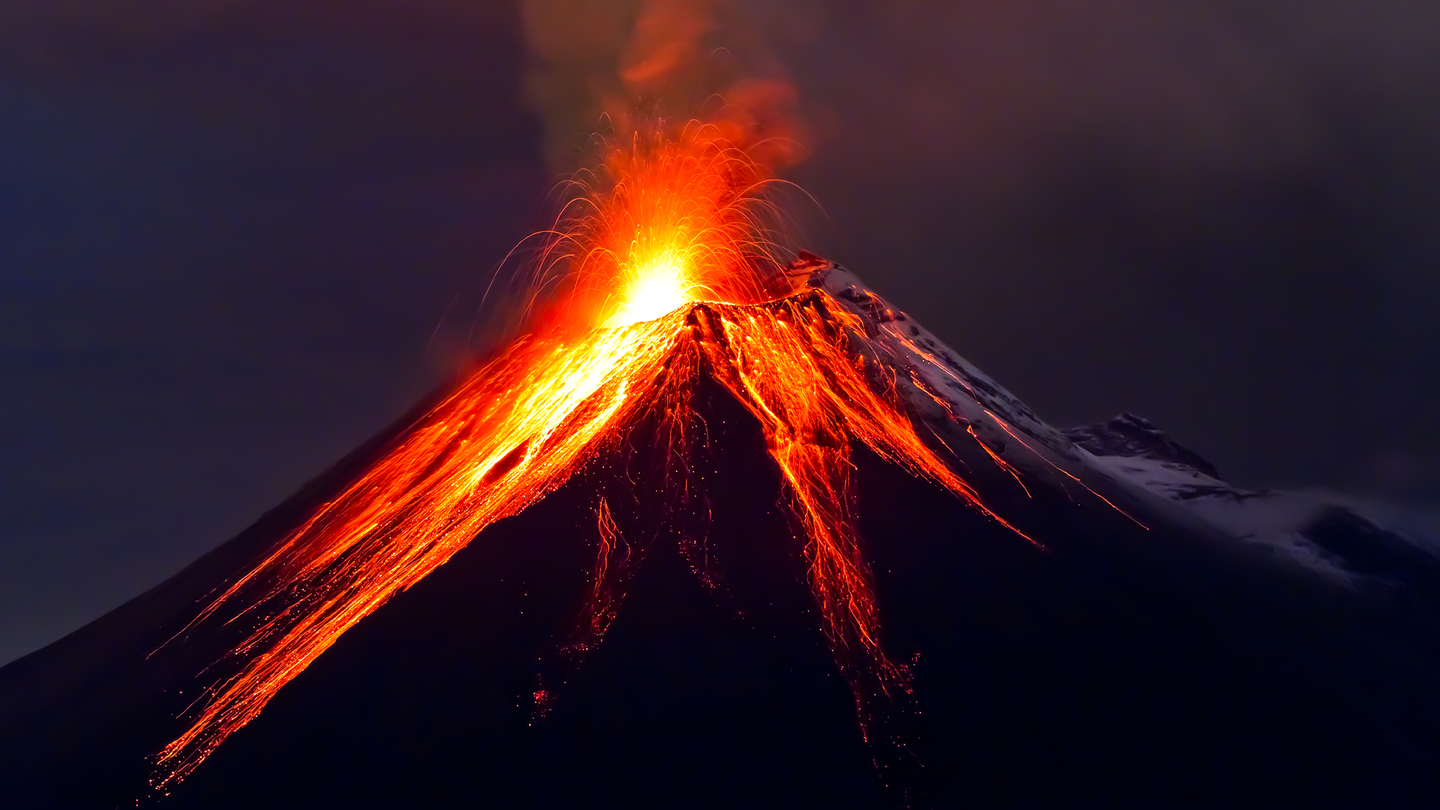A boiling hot supercontinent could kill all mammals in 250 million years
The history and future of mass extinctions.

Despite having the critical and even miraculous ingredients to sustain life from microscopic viruses up to big blue whales, planet Earth likely has a future that spells some doom for most, if not all, species of mammals—including humans. A study published September 25 in the journal Nature Geosciences made the bold prediction that in about 250 million years, all of Earth’s major land masses will join together as one. When they do, it could make our planet one extremely hot and almost completely uninhabitable for mammals.
[Related: Mixing volcanic ash with meteorites may have jump-started life on Earth.]
“Widespread temperatures of between 40 to 50 degrees Celsius [104 to 122 degrees Fahrenheit], and even greater daily extremes, compounded by high levels of humidity would ultimately seal our fate,” study co-author and University of Bristol paleoclimatologist Alexander Farnsworth said in a statement. “Humans—along with many other species—would expire due to their inability to shed this heat through sweat, cooling their bodies.”
The models in this study predict that CO2 levels would rise to between 410 parts per million and 816 parts per million in a few million years This is roughly the same as today’s level, which is already pushing the planet into dangerously hot water, or up to twice as high.
“They do explain quite nicely that it’s a combination of both those factors, kind of a double whammy situation,” geophysicist Ross Mitchell of the Chinese Academy of Sciences, who was not involved in the study, told Science magazine. “If there’s any disagreement I have with this paper, it’s that they’re more right than they thought they were.”
This prediction aligns well with Earth’s past periods of mass extinction and the volatile history of our planet. Here are some other times that mammalian and human life on Earth was almost completely wiped out.
The Pleistocene Ancestral Bottleneck
About 800,000 to 900,000 years ago, the population of human ancestors drastically dropped. A study published in August estimates that there were only about 1,280 breeding individuals alive during this transition between the early and middle Pleistocene. About 98.7 percent of the ancestral population was lost at the beginning of this ancestral bottleneck that lasted for roughly 117,000 years.
During this time, modern humans spread outside of the African continents and other early human species like Neanderthals began to go extinct. The Australian continent and the Americas also saw humans for the first time and the climate was generally cold.
Some of the potential reasons behind this population drop are mostly related to extremes in climate. Temperatures changed, severe droughts persisted, and food sources may have dwindled as animals like mammoths, mastodons, and giant sloths went extinct. According to the study, an estimated 65.85 percent of current genetic diversity may have been lost due to this bottleneck.
[Related: We’re one step closer to identifying the first-ever mammals.]
The Great Dying
About 250 million years ago, massive volcanic eruptions triggered catastrophic climate changes that killed 80 to 90 percent of species on Earth. The Permian-Triassic mass extinction, or the “Great Dying,” paved the way for dinosaurs to dominate Earth, but was even worse than the Cretaceous–Paleogene extinction that wiped out the dinosaurs 66 million years ago.
According to a study published in May, saber-toothed creature called Inostrancevia filled a gap in southern Pangea’s ecosystem, when it was already devoid of top predators. Eventually, Inostrancevia also went extinct about 252 million years ago, as Earth’s species fought to gain a foothold on a changing planet.
This example of how the past is prologue also bears a warning for our future, since the team says The Great Dying is the historical event that most closely parallels Earth’s current environmental crisis.
“Both involve global warming related to the release of greenhouse gasses, driven by volcanoes in the Permian and human actions currently,” study co-author museum curator and paleontologist Christian Kammerer told PopSci in May. “[They] represent a very rare case of rapid shifts between icehouse and hothouse Earth. So, the turmoil we observe in late Permian ecosystems, with whole sections of the food web being lost, represents a preview for our world if we don’t change things fast.”
The Ultimate Mammalian Survivor
Despite Earth constantly trying to kill us, life finds a way. Some of our very early ancestors potentially even shared a brief moment with Titanosaurs and the iconic Triceratops. These distant mammalian relatives also survived the Earth’s most famous mass extinction event: the Cretaceous-Paleogene (K-Pg) mass extinction that wiped out non-avian dinosaurs on a spring day about 66 million years ago.
[Related: This badger-like mammal may have died while trying to eat a dinosaur.]
A study published in June revealed that a Cretaceous origin for placental mammals, the diverse group that includes humans, dogs, and bats, briefly co-existed with dinosaurs. After an asteroid struck the Earth near Mexico’s Yucatán Peninsula, the devastation in its wake wiped out all of the non-avian dinosaurs and many mammals, such as a Madagascan rodent-looking animal named Vintana sertichi that weighed up to 20 pounds Scientists have long debated if placental mammals were present with the dinosaurs before the Cretaceous-Paleogene (K-Pg) mass extinction, or if they only evolved after the dinosaurs died out.
This study used statistical analysis that showed groups that include primates, rabbits and hares (Lagomorpha), and dogs and cats (Carnivora) evolved just before the K-Pg mass extinction and the impact that the modern lines of today’s placental mammals started to take shape after the asteroid hit. As with other mammals, they likely began to diversify once the dinosaurs were out of the picture.
